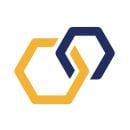In his famed “Man in the Arena” speech, former U.S. president Theodore Roosevelt urged his audience to pursue ambitious goals — even in the face of setbacks.
“The credit belongs to the man who is actually in the arena… who strives valiantly,” Roosevelt said in the 1910 speech. “Who, at the best, knows, in the end, the triumph of high achievement, and who, at the worst, if he fails, at least he fails while daring greatly.”
In the tech world, leaders often formalize this concept of “daring greatly” — a phrase popularized by Brené Brown’s 2012 book of the same name — through organizational values such as “take risks” and “fail fast.” However, setbacks can be costly in high-stakes and fast-paced work environments, and many leaders often fall short of truly embracing employee missteps.
At the companies featured below, leaders are serious about celebrating creative endeavors, even when they do not pan out as intended. Through a number of innovative efforts — ranging from hosting weeklong hackathons to assigning mentors for debriefing prototype redesigns — these engineering pros ensure their teams are thinking outside the box, learning from mistakes and persevering through challenges.
From Artera and Honeybee Robotics, the featured leaders connected with Built In Los Angeles to share tips on how to promote experimentation in the workplace and enable employees to “dare greatly.”
Artera delivers a platform-level patient communications solution that integrates across a health system’s tech stack.
How do you signal to team members that it’s OK to take risks, experiment with their craft and potentially fail in the process?
We recently introduced a hackathon into our engineering culture through an exciting weeklong event. Teams generated ideas to enhance our product offerings, dove into their implementation, collaborated across departments and had an absolute blast.
The hackathon was all about freedom and creativity. Teams explored problem-solving from new directions and experimented with projects outside of their day-to-day work. Some succeeded while others didn't — it was all in the spirit of learning and collaboration to ultimately improve our product and our team.
Teams explored problem-solving from new directions and experimented with projects outside of their day-to-day work.”
We encouraged ambitious ideas that pushed boundaries, even if they couldn’t be completed within a week. This encouraged our engineers to make tough decisions during the design and implementation phases, evaluating what would have the most impact and showcasing their creativity. Some projects even progressed from proof of concept to full production. We’re thrilled with the results, and our teams are eager for more events that foster experimentation and allow them to demonstrate their ability to thrive in time-constrained situations.
Tell us about a time when a team member took a risk that did not work out. What was the outcome, and how did your team benefit in the process?
Our teams operate in different domains of the application, naturally establishing virtual boundaries within the code structure. While this allows teams to focus on their respective domains, it can also result in fragmented adoption or deprecation of tools and frameworks across engineering.
Recently, we decided to remove an error-monitoring platform from our tech stack to save costs. Teams promptly took action to ensure that disabling the production configuration wouldn’t impact their team-owned services.
However, due to time constraints, we postponed the code cleanup, resulting in accumulated technical debt. During an attempt to remove what seemed to be unused code across the entire code base, an engineer unintentionally triggered a significant production incident. We conducted a blameless post-mortem exercise to analyze the incident, revealing the interdependencies in the code that were documented in our root-cause analysis. This experience provided valuable insights into what not to do when it was picked up again for code deprecation and cleanup.
How does encouraging experimentation allow your team to learn, grow and develop?
Quick prototyping, contextual learning and focused collaboration help build multiple skills that stay long after the hackathon ends.
During our hackathon, teams learned the importance of effective front-end and back-end transformations; experimented with ChatGPT to personalize campaign messages and analyze patient responses; built reusable components; explored challenges around translations in various language locales; investigated the capabilities of other API platforms to accelerate and solve complex use cases; and gained more cross stack experience — all within an impressive one-week timeframe.
From parent company Blue Origin, Honeybee Robotics designs and develops robotic systems for space exploration.
How do you signal to team members that it’s OK to take risks, experiment with their craft and potentially fail in the process?
At Honeybee Robotics, nearly everything we do is a novel development. Sometimes, projects reflect some heritage of work we’ve accomplished before, but every project has new challenges. We’re working on our own branch of space technologies, so if we embark on something new, there isn’t a whole lot of material for us to reference. We’re on our own a lot of the time.
What sets Honeybee apart is our commitment to fostering a culture of technical leadership that encourages open collaboration within teams. Given the nature of our work, technical leaders must be willing to embrace significant risks. Instead of putting up a façade of false confidence, they actively engage with their teams, openly acknowledging and addressing the uncertainties that come with forging new paths.
Both failures and successes are borne as a team and blame is not a game played. Together, we strive to gain expertise in unfamiliar domains. This approach allows new engineers to observe and participate in the journey of these leaders and prepares them for future leadership roles.
Both failures and successes are borne as a team and blame is not a game played.”
Tell us about a time that you took a risk and it worked out. What was the outcome, and how did you or the team benefit in the process?
The most recent risk I undertook was venturing into a technical leadership position for a flight program that is intended to be sent to space. At Honeybee, I have stepped into various roles that I wouldn’t have had the confidence to pursue without the encouragement of leaders around me. Honeybee is full of mentors, and my mentor decided to entrust me with new responsibilities, which brought me to this leadership position. It inspires me to pay it forward to my team.
Honeybee hosts a handful of fresh graduates, and with the right resources, support and trust, they see it’s possible to step out of their comfort zones and stretch their abilities. This spring, my team and I completed our goal to design and manufacture a brand-new instrument set for the moon in a couple of years’ time. It wasn’t a smooth path. We encountered bumps along the way, but looking back, we’re miles ahead of where we started. Our resilience was reinforced by trusting relationships and collective efforts.
How does encouraging experimentation allow your team to learn, grow and develop?
Honeybee is intentional about giving people opportunities to grow through experimentation. We encourage engineers early in their careers to pursue hardware-rich programs whenever feasible. These are projects in which prototyping is integral to the design process.
Engineers in these programs often serve multiple roles — from idea formulation and design to build and testing. They are encouraged to get comfortable with all portions of the development cycle, and, in a term, they are well-rounded. Our engineers train their intuition by successfully designing and building a prototype in a test bed and receiving data feedback.
Equally as important, the experience of redesigning and rebuilding a prototype after a failed experiment also contributes to the development of intuition. To support this growth, we assign mentors who debrief results, help chart a new path and provide encouragement for another attempt. This approach allows team members to confidently leverage their lessons learned to tackle future challenges.









